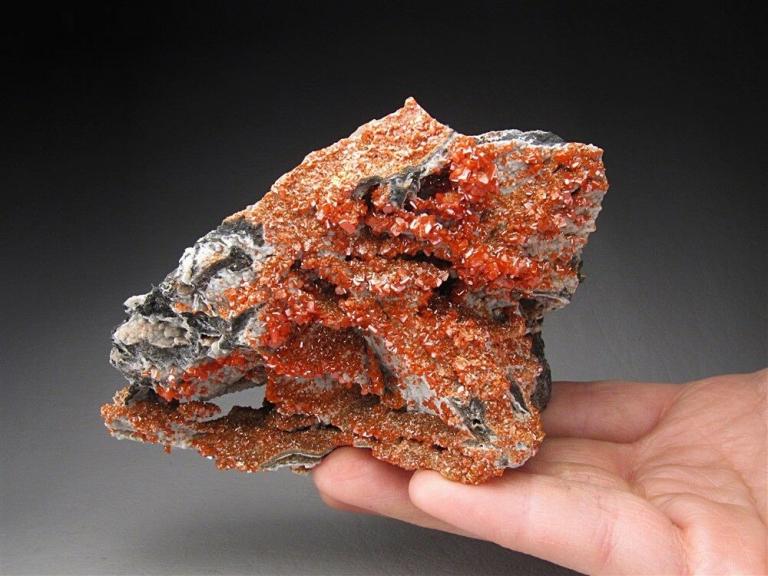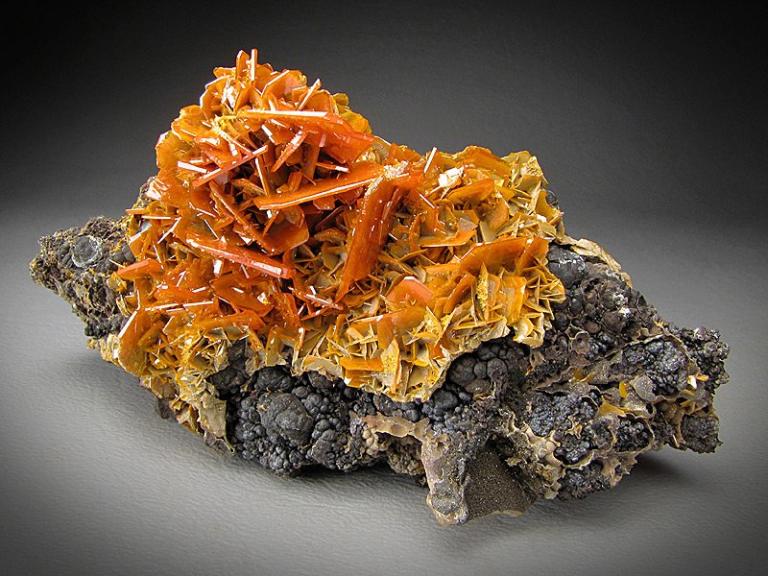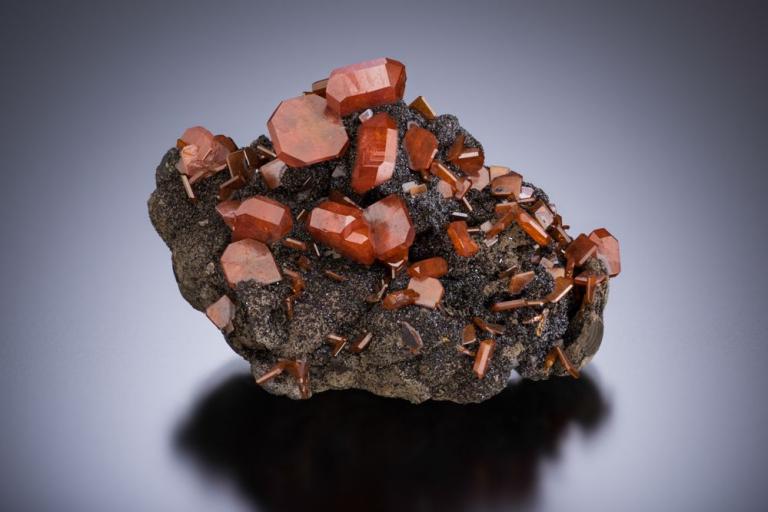Metal minerals
9 min readThe ore species of ferrous metal in Xin jiang is complete, including five kinds of iron, manganese, chromium, vanadium, and titanium; iron is the main species that is undercurrent development, followed by chrome and manganese. The iron prediction amount reaches 8.91 billion tons, with the characteristics of wide distribution, complete types, and large potential reserves, and the rich ore accounts for a large proportion. Deposits are mainly concentrated in the Eastern Tianshan Mountains, Western Tianshan Mountains, the Altai Mountains and Kunlun Mountains, with a total of 570 ore fields, among which 24 are large and medium-sized mining areas with reserves of more than 10 million tons.

The ore species of nonferrous metal in Xin jiang is also complete, including 12 kinds of copper, lead, zinc, nickel, aluminum, tungsten, tin, molybdenum, cobalt, mercury, and antimony; and the nickel resource reserve ranks second in China. The copper prediction amount is 51.954 million tons, and nickel is 5.199 million tons. The deposits that have been found are mainly in Altai, Kumul, lli, Aksu and Bayingolin Mongol Autonomous Prefecture, and the large and medium-sized mining areas are in the Altai Mountains and Eastern Tianshan Mountains. The prediction amount of lead and zinc is 84.956 million tons, and the deposits mainly distribute in the Altai Mountains, Tianshan Mountains and Kunlun Mountains.
Gold is the main precious-metallic mineral resource in Xin jiang, and the currently there are 43 known mineralization belts; Xin jiang is famous for its gold, and the Altai Mountains and Altun Mountains were named after gold.
Xinjiang is rich in rare metals with complete species, and the producing areas are mainly concentrated in the Altai Mountains and Kunlun Mountains, and there are also some in Eastern and Western Tianshan Mountains. Beryllium, lithium, niobium, tantalum, zirconium, rubidium, and cesium have been found, and beryllium and cesium rank first in China.
Iron is one of the preponderant mineral resources in Xinjiang, with the characteristics of wide distribution, complete types, and large rich ore ratio, and the discovered reserve ranks second in the five provincial administrative regions of northwestern China.
The identified iron ore resources in Xinjiang distribute widely and in a relatively concentrated manner. There are more than one thousand iron ore producing areas, and 80% of the iron ore reserves is located in Tianshan Mountains, especially in Eastern Tianshan Mountains, and then in western Kunlun Mountains, the Altai Mountains, and Altun Mountains. Kumul and Turpan have the most iron ore producing areas, and the reserves account for 56% of the total reserves in Xinjiang; they are followed by Altai Prefecture, accounting for 14%. Eastern Xin jiang(Kumul and Turpan), and Northern Xin jiang(Altai Prefecture and Ili Prefecture) are the major iron ore supplying places.
Xinjiang iron ore has complete types and prominent features. The main ore types include magnetite, hematite, siderite, vanadium-titanium magnetite, cupric magnetite, andFe-Mn ore. Magnetite is the major type, accounting for 75.9% of the total in Xinjiang, followed by siderite and hematite. Various types of iron ore have been found in Xin jiang and the proved reserve of sedimentary-metamorphic ore accounts for about 50% of the total amount. The grade of iron ore in Xinjiang is generally low at 30% to 40%, but as magnetite is of the largest amount, it is easy to use magnetic method for ore dressing. The geological exploration level is low, and there is potential for further expanding the resource.
The rich ore takes a large proportion in Xin jiang. Among the proved reserves of iron ore, rich iron ore accounts for over 30%, much higher than the national proportion of 5%.
The large-scale iron ore fields that have been found in Xin jiang are Mengku in FuyunCounty, Heaven Lake and Magnetism sea in Kumul, Dimunalike in Qiemo County, Wa jilige in Bachu County, and Pargang in Shanshan County; and the medium-sized fields are Hundred Mountain Spring, Kumtag, Tieling, Bailing Mountain, Weiya,M1033 in Kumul City, Chilong Peak, Wutonggou, Jianshan and Red Cloud Beach in Shanshan County, Motuoshala, Chagannur and Beizhan in He jing County, Buqiong in Pishan County, Heiheizizhangan in Yecheng County, Laobing and Zankan in Tashikuergan County, Qiliekeqi in Akto County, and Kebutai in Xinyuan County.
Cromite
Chromite is an important mineral resource for alloy smelting, but the proved ore source is less, mainly relying on imports. Chromite in China mainly distributes in Tibet, Inner Mongolia and Xinjiang; Tibet has the most, accounting for about 40% of the total reserves, followed by Inner Mongolia, accounting for 17%, and Xinjiang, accounts for 12.5%. The chromite resources in Xinjiang are mainly concentrated in East and West Junggar and Kawabulake. The Toli County in West Junggar contains about 99.2% of the total reserves in Xin jiang, with the predicted amount of 26.3 million tons, so the county is one of the mostimportant chromite fields. The grade of the ore in Xinjiang is high with much rich ore, and the traffic condition is better than that in Tibet, so it has certain advantages.
At present, there are 44 known chromite deposits(spots) including 1 medium-sized, 5 small deposits, and 10 mineralized spots. Ma jor chromite deposits(spots) are: Sartokay medium chromite deposit in Toli County,1,061 small chromite deposit in Shanshan County, Qingshui chromite spot in Fuyun County, and Kudi chromite spot in Yecheng County.
Except for the Sartokay deposit, the other deposits have already been exhausted. The proven C+D grade chromite ore reserves rank second in China. There are a total of four chromite mining fields in West Junggar region, but nearly 90% of the resources concentrate in Sartokay. The West Junggar is the only producing area of refractory grade chrome ore.
Manganese Ore
Xinjiang has the most manganese resource among the five provincial-level administrative regions of northwestern China, and ranks ninth in China. There are more than 60 manganese producing areas, two of which are medium-sized deposits with the reserves of between 2 and 10 million tons, six are small-sized deposits with the reserves of between 0.2 and 2 million tons, and five with the reserves of between 20 and 200 thousand, and the others are all mineralized spots with low work degree. The proven manganese ore reserve is 10.4538 million tons, and 7 fields have been listed in the ZYCItable by the end of 2000, with the recoverable deposits of 9.004 million tons, and 53% is above class-C. Manganese ore resource is mainly the oko ore, and the type is mainly manganese carbonate. Almost all the manganese is in Tianshan Mountains, and there is one medium-sized deposit, two small-sized deposits, and one in Hejing, Bayingolin Mongol Autonomous Prefecture and the proved manganese ore reserves account for about 50.5% of the total amount in Xin jiang, ranking first in Xin jiang. It is followed by Zhaosu in lli, where there is one medium-sized deposit and two small-sized deposits, and the proved manganese ore reserves account for about 40.5% of the total amount in Xinjiang, ranking the second. There is also one small-sized deposit, and one mineral resource spot in Baicheng of Aksu, accounting for 5.3%; and the proved manganese ore reserves in Kumul account for about 1.4% of the total amount in Xinjiang. Though there is no deposit and its total reserves are only about one hundred thousand tons scattered in spots, Kumul is one of the main manganese mining zones in Xinjiang because of the shallow burial depth, convenient transportation, and the production of manganese oxide ore easy to be used.Duwa field in Pishan County is another manganese ore producing place with the development potential in Xinjiang.
The manganese mineralization geologic feature in Xin jiang is relatively simple. The island arc belt and arc trench system environment with the activity of Paleozoic volcanic is the main metallogenic environment, and the formed volcanic sedimentary type carbonate manganese ore accounts for about 91% of the total reserves in Xinjiang. The easy-to-use industrial manganese oxide ore is only found in Duwa field in Pishan County, and Baicheng-Kuqa, and it is hard to form large manganese ore deposits in pther places, therefore, there is still a shortage of manganese mineral resource in Xinjiang currently. The manganese mining in Xinjiang is mainly in Dashui of Kumul, Duwa of Hotan, and in some iron and manganese paragenic ore.
Cu-Ni ore
The Cu-Ni ore in Xinjiang has the characteristics of vast distribution, wide range, and complete types. Hundreds of ore fields have been found, mainly in the Altai Mountains, Tianshan Mountains, Kunlun Mountains and the northern edge of Tarim Basin. The proved areas of large and medium-sized metallogenic belts are in Altai Prefecture and Kumul.
In Altai Prefecture there are:(1) the Suoerkuduk-Kalatongke metallogenic belt, with the proved copper reserves of nearly 800,000 tons, and nickel reserves of about 250,000 tons.The predicted copper resource is of 2 million tons, and nickel reserves of about 1.5 million tons.(2) Haba River-Keketale copper and polymetallic metallogenic belt. There are controlled copper reserves of 1 million tons, and predicted copper reserves of over 2.7million tons. Ashele copper mine is a large copper and zinc mine, with about one million tons of copper of grade from 1% to 5%, hundreds of thousand tons of zinc reserves, grading from 3% to 5%, tens of thousand tons of lead reserves, grading about 1%; and the gold and silver content is also high and the sulfur grade is rich, with ore reserves of nearly 30 million tons, being a large deposit.
In Kumul there are:(1) Kumul Red Lake-Huangshan mirror spring copper-nickel metallogenic belt. The belt is of over 270km long and 30km wide, formed by basic-ultra basic rock mass, which is the main rock mass for forming copper nickel ore body. The mining areas are Tudun, Huangshan, and Eastern Huangshan, and so on. The proved reserve is over 1 million tons, with nearly 500,000 tons of copper ore, and nearly 900,000 tons of nickel ore; the predicted copper-nickel amount is 8 million tons.(2) Tuwu-Yandong copper metallogenic belt. It is the porphyry copper mine with a certain scale. The grade is generally less than 1%, the geological reserve is of 650,000 tons at present, the copper grade is of065%,95% is the primary ore, and 5% is oxidized ore. The large deposit reserves in these two areas account for more than 95% of the total reserves in Xinjiang, and the left are small ore spots.

At present, there are many large copper deposits in Xinjiang, such as Ashele copper and zinc mine, Kalatongke Cu-Ni ore mine in Fuyun County, Suoerkuduke copper-molybdenum ore mine, Kumul Huangshan Cu-Ni ore mine, and Kumul eastern Huangshan Cu-Ni ore mine Seen from the resource distribution, large deposits mainly distribute in Ashele of Habahe County, Fuyun County in northern Xinjiang, and Kumul Huangshan in eastern Xinjiang. The mines are relatively concentrated.
Lead zinc ore
Lead zinc ore widely distribute in Xin jiang with good deposit type and rich resources.Till 1998, the known lead-zinc producing areas had been 215, among which 2 were identified large deposits,12 were medium-sized deposits, and 25 were small deposits, distributing in Habahe, Burqin, Altai, Fuhai, Fuyun, Aketao, Artux, Ulugqat, Keping, Yining, Hejing, Kumul, and Toksun, and concentrating in the two belts of the southern margin of the Altai Mountains, and the western margin of the Tarim Basin. Till the end of 1998, the engineering controlled lead and zinc reserves had been 6 million tons, making it one of the preponderant metal mineral resources in Xinjiang.
Lead and zinc in Xin jiang mainly distribute in the areas of the Altai Mountains, western Kunlun Mountains, and Tianshan Mountains. By the end of 2000,36 important deposits(spots) had been found in Xin jiang. Lead and zinc are in the symbiotic or associated mines, and the deposit scale division standard is the same. The total proved lead and zinc reserve is of 4,807,400 tons, among which, the lead reserve is of 1,710,800 tons, and the zinc reserve is of 3,096,600 tons. According to the occupancy volume of lead and zinc in Xinjiang, Altai Prefecture ranks the first, accounting for about 74.3% of the total reserves in Xinjiang; followed by Kizilsu Kirghiz Autonomous Prefecture which accounts for 17.4%; and other prefectures account for less than 5%.
Bauxite
The aluminum resources in Xin jiang include two categories: bauxite and non-bauxite, and the non-bauxite type includes adamantine spar, andalusite, alunite, kyanite, nephelinesyenite and other high-alumina minerals and rocks. There are four large-scale deposits, among which there is one nepheline syenite deposit, one andalusite deposit, and 2 adamantine spar deposits; and there is 1 small bauxite deposit. The above-mentioned deposits mainly distribute in Aksu Prefecture and the Kizilsu Kirghiz Autonomous Prefecture in the southern Tianshan Mountains, and parts of high-alumina minerals also distribute in Kumul Prefecture and Altai Prefecture.









